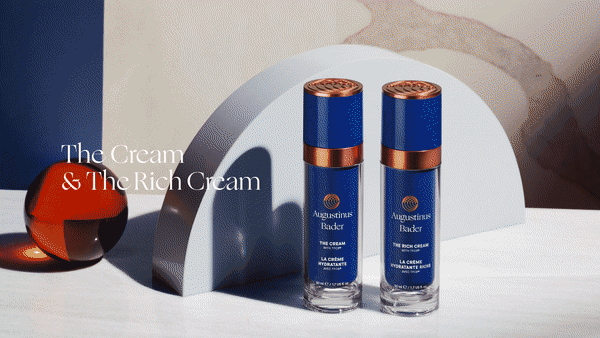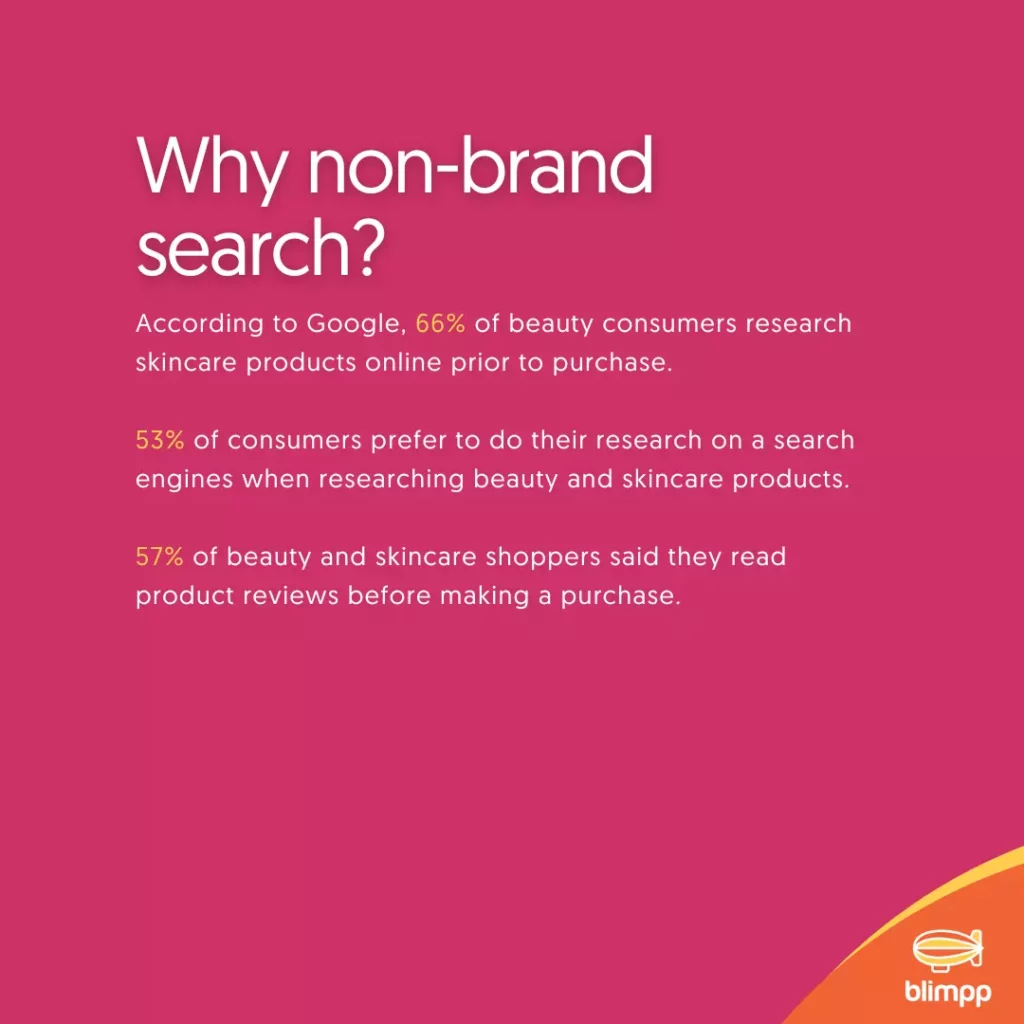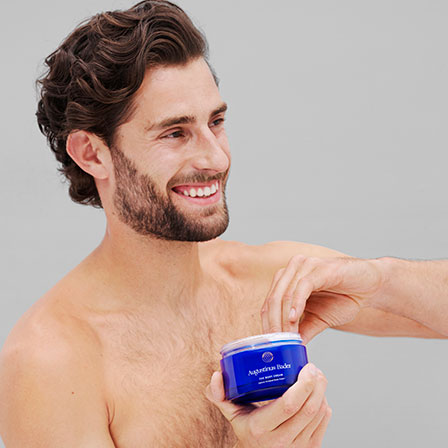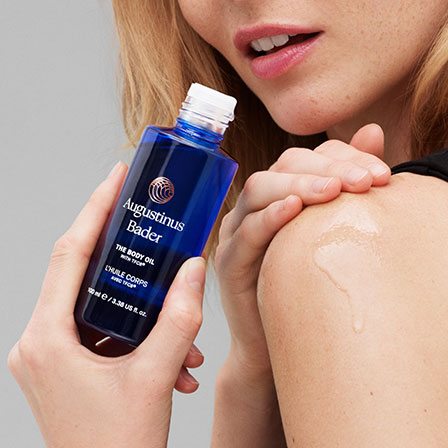Augustinus Bader
Winner of an astonishing 105+ beauty awards in just 4 years , Augustinus Bader is a luxury skincare brand like no other. This is the story of how we helped to drive record revenue growth with YouTube Ads.
One
Introduction
What this case study will cover?
In the highly competitive skincare industry, effective customer acquisition has become increasingly challenging post-iOS 14.
This case study explores how Augustinus Bader, the luxury skincare brand, worked with blimpp to go beyond demand capture and drive awareness with non-brand search to drive first-touchpoint interactions with target customers.
We will examine the challenges the brand faced in their previous demand generation efforts, the process of developing and implementing a robust non-brand strategy, and the results achieved. By analysing the performance of the campaign and the key lessons learned, we’ll provide insights for other skincare brands looking to enhance their demand generation with search.
Two
The Brand
Augustinus Bader is known for their innovative skincare products that use advanced technology and scientific research to improve skin health. Despite the quality of their products, the brand faced challenges in diversifying their demand generation mix beyond Facebook, particularly with the onset of iOS 14.
With the help of long-time Google partner blimpp, Augustinus Bader aimed to increase brand visibility, drive website traffic, and ultimately, increase sales.
This case study will provide an in-depth analysis of Augustinus Bader’s non-brand strategy, highlighting the strategies and tactics that led to its success. By sharing their experience and results, we hope to provide valuable insights for other skincare brands looking to drive demand generation with search, and drive growth in a highly competitive market.



Three
The Challenge
Since its launch in 2018, Augustinus Bader has been using a mix of search engine marketing and paid social to promote their creams and serums.
However, non-brand search has always been a relatively expensive area of demand generation, characterised by low click-through rates and a high cost per acquisition.
For those wondering “why non-brand search?”, the numbers simply stack up for Augustinus Bader:
- According to Google, 66% of beauty consumers research skincare products online prior to purchase.
- 53% of consumers prefer to do their research on a search engines when researching beauty and skincare products.
- 57% of beauty and skincare shoppers said they read product reviews before making a purchase.

Typically, when brands struggle with scaling non-brand search, there are a few factors at play:
- Too broad a focus on keywords and target audiences.
- Not enough focus on a fully congruent funnel, from search to landing page.
- Over-reliance on landing pages to warm up cold traffic.


Four
The Strategy
In order to develop a successful non-brand search strategy for Augustinus Bader, it required us to first take a step back and understand the context behind each search a user usually takes.
Put simply, our approach was to segment three types of search within each campaign: informational, transactional, and competitor.
Keyword Strategy
Informational searchers, such as those whom were problem-aware searching for answers to specific skincare questions, represented the largest portion of opportunity.
Transactional searchers, representing those users actively in-market, were the core area of focus, as they were both problem and solution-aware, and could be converted more efficiently.
Finally, competitor searchers, or those who were searching for other brands and products, were also identified as valuable, however not a core part of this strategy as acquisition costs were deemed to be too high during initial testing (largely due to sky-high CPMs).
To build out the intial list of keywords, we turned to both Google Keyword planner and Ahrefs, to isolate terms which were targetable.
Our approach here was only to target terms which met a strict criteria:
- Keywords needed to be of sufficient volume, at least 500 searches per month.
- Keywords needed to reference a specific problem or solution type to be considered.
- Naturally, due to the high AOV of the brand, we were especially keen to appear on landscapes where comparative intent was highest, i.e. “best”, “top”, “award-winning”.
- Most importantly, at a product level, we kept informational and transactional keywords segmented, going against the widely-held Google best practice of consolidation.
Given that we were to extensively use Broad match keywords, in order to keep relevancy water-tight, we adopted an extensive list of negatives to isolate the “correct” intent, by campaign type.
This meant applying informational keywords as negatives across transactional search and vice-versa.
Audience Strategy
Keywords (and the search terms that they trigger), can tell us a lot about user intent, however due to the $200+ AOV, we also needed to dial down on audience selection.
We utilised demographic selection, including Household Income targeting to help underline audiences to engage with.
Beyond that, we were also keen to gave Google as many relevancy signals as possible, so created a thorough list of audiences to target based on Googles Audience Insights tool. Amongst these were in-market audiences, similar audiences, and combined segments for search.
In-market audiences were a useful starting point for identifying users who were deep in the research phase, so therefore represented a substantial opportunity to convert.
Uploading high-value audiences and creating similar audiences off the back of those, allowed us to find people just like our best customers – or at least in the eyes of the Google algorithm.
By far the most effective audience category were combined audiences, where we grouped together standalone in-market, affinity, and 1st-party audiences to create power audience combinations.
Ad Strategy
Ads would be a crucial part of the overall approach, with pinned Responsive Search Ads used to isolate search terms and intent.
The core tenants of this approach were to ensure that ads match individual search themes as closely as possible, signpost what the user could expect on click-through, and to use the description text to expand on theme. Ads were labelled by theme, and changed to reflect top-performing variations.
For informational search, the nature of the ad was to inform and educate first, with the landing page utilised to sell once users had engaged.
Transactional ads were more aligned to social proof elements, but again the same principles were applied to match the intent and specific problem that the user was experiencing.
The overall ad strategy was highly effective in driving CTR, and typically we saw Quality Scores of 8 or higher across competitive non-brand search landscapes. This also impacted positively on cost per click, meaning that we saw a significant discount on clicks vs. competitors.


Five
The Results
Within 3 months, Augustinus Bader achieved substantial growth through non-brand search, helping to drive record-breaking growth across the business.
Increased click-through rates: Combined the non-brand search campaigns drove 83% increase in CTR YoY, vs. comparable non-brand campaigns.
Sales: A 455% increase in sales YoY, across comparable non-brand campaigns.
Revenue: A 559% increase in revenue YoY, across comparable non-brand campaigns.
The testing process was critical to achieving these results, as it allowed blimpp to identify the most effective ad formats, keywords, and messaging for Augustinus Bader’s target audience. By continually refining the campaigns, we were able to optimise ROI and achieve significant growth in revenue across non-brand search campaigns.
Six
Lessons Learned
The Augustinus Bader non-brand activation provided several key lessons that other skincare brands can learn from when developing their own demand creation and capture strategies:
Segmentation is (still) key: Targeting specific sub=sections of non-brand search was the lever that allowed us to scale most. Consolidation is a worthwhile approach across other campaign types, but across non-brand search, segmentation of intent is key.
Congruency of message: Aligning search intent, with ad copy, and landing pages is still the way forward. Ensure ad themes are aligned to the exact thing that your audience is looking for.
Testing at scale: Continuously testing different elements of the campaign, such as ad messaging, audiences, and bid strategy, remains crucial for refining the strategy and optimising ROI.
- Landing pages matter: Optimising landing pages for relevance specific to each search type remains one of the key levers to driving non-brand search growth.
Google. We Do It Better.
Ready to become our next success story?
Scaling seven and eight-figure Beauty & Wellness brands with Google Search & YouTube Ads.
